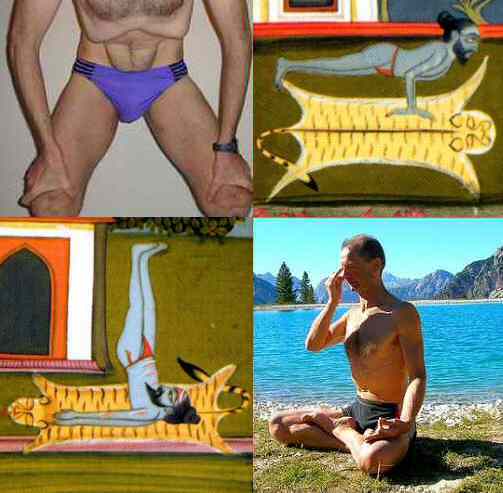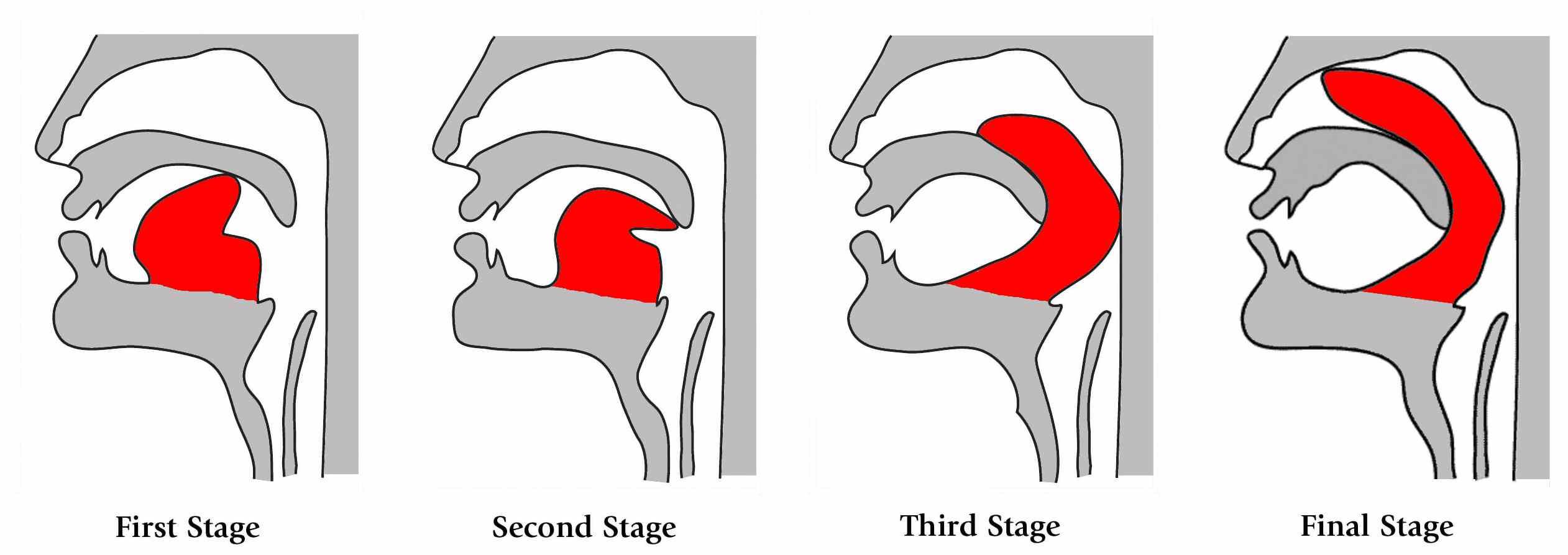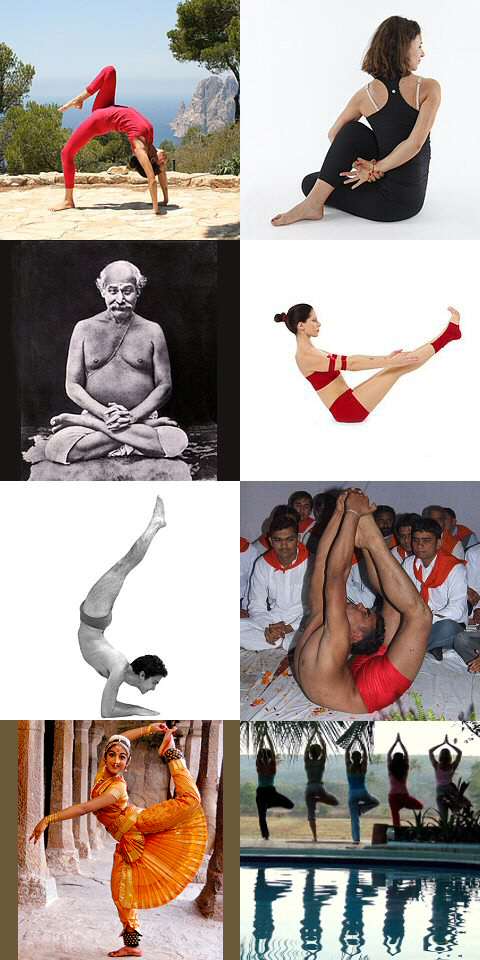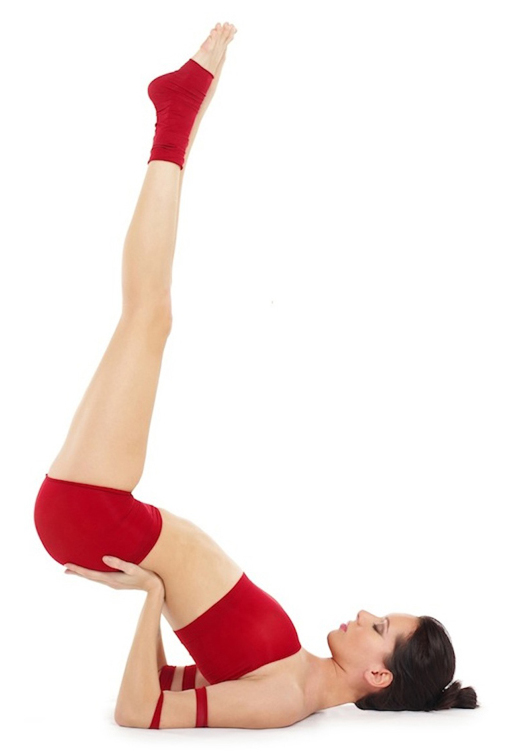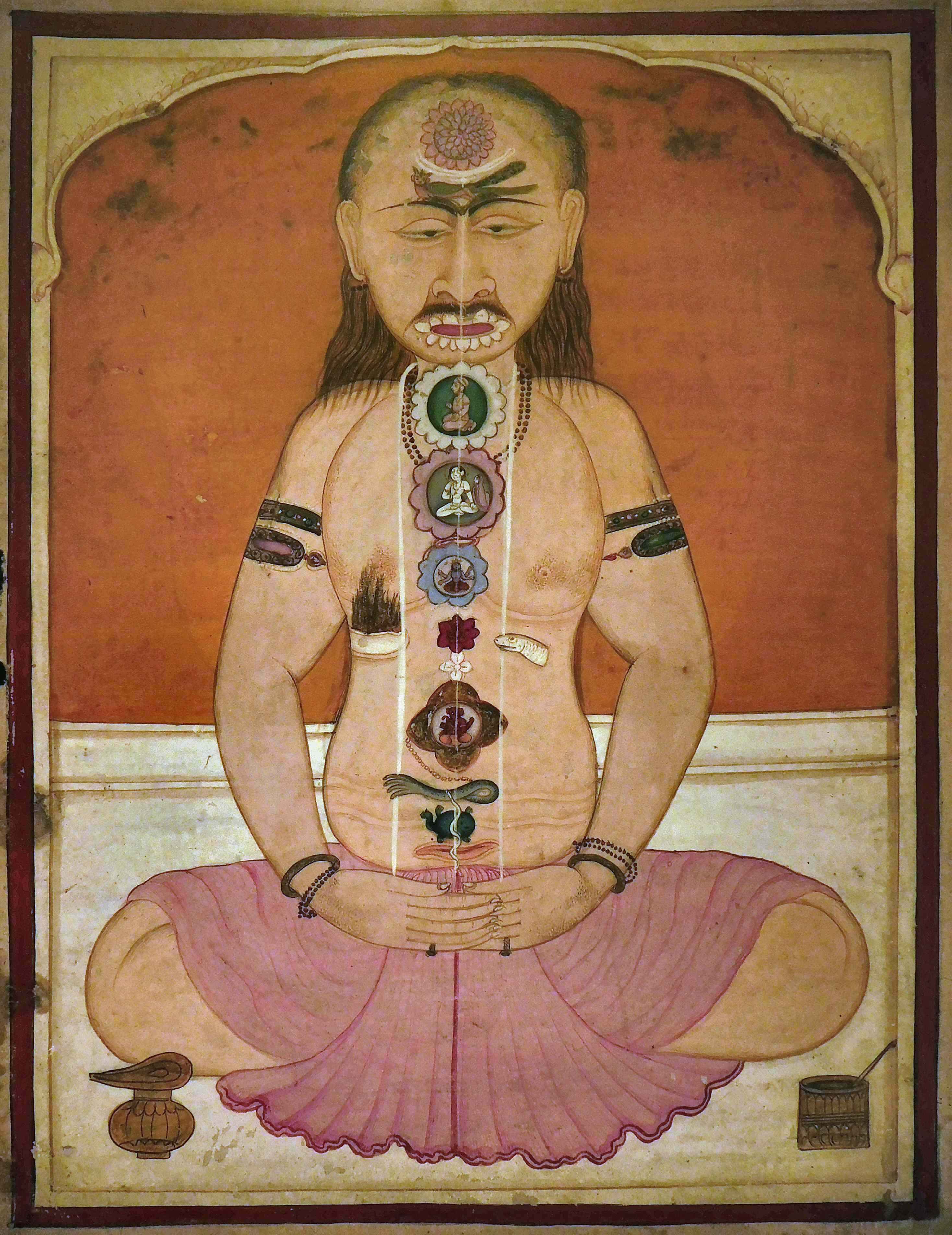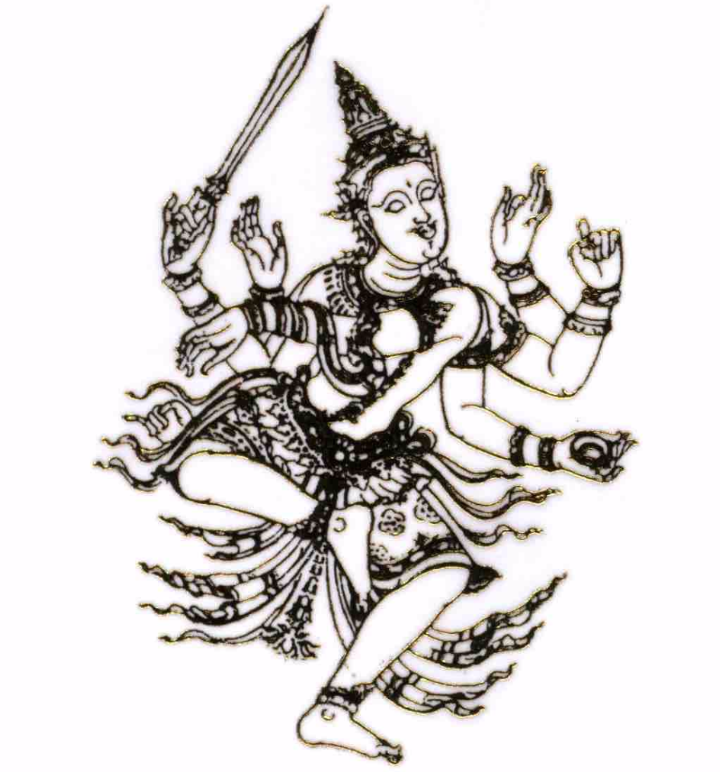|
Mudra
A mudra (; sa, मुद्रा, , "seal", "mark", or "gesture"; ,) is a symbolic or ritual gesture or pose in Hinduism, Jainism and Buddhism. While some mudras involve the entire body, most are performed with the hands and fingers. As well as being spiritual gestures employed in the iconography and spiritual practice of Indian religions, mudras have meaning in many forms of Indian dance, and yoga. The range of mudras used in each field (and religion) differs, but with some overlap. In addition, many of the Buddhist mudras are used outside South Asia, and have developed different local forms elsewhere. In hatha yoga, mudras are used in conjunction with pranayama (yogic breathing exercises), generally while in a seated posture, to stimulate different parts of the body involved with breathing and to affect the flow of prana. It is also associated with bindu, bodhicitta, amrita, or consciousness in the body. Unlike older tantric mudras, hatha yogic mudras are generally in ... [...More Info...] [...Related Items...] OR: [Wikipedia] [Google] [Baidu] |
Vajroli Mudra
''Vajroli mudra'' (Sanskrit: वज्रोली मुद्रा ''vajrolī mudrā''), the Vajroli Seal, is a practice in Hatha yoga which requires the yogin to preserve his semen, either by learning not to release it, or if released by drawing it up through his urethra from the vagina of "a woman devoted to the practice of yoga". The mudra was described as "obscene" by the translator Rai Bahadur Srisa Chandra Vasu, and as "obscure and repugnant" by another translator, Hans-Ulrich Rieker. The mudra is rarely practised in modern times. It was covered in the 1900s by the American sexologist Ida C. Craddock, the resulting legal proceedings against her leading to her imprisonment and suicide. The explorer Theos Bernard learnt and illustrated the posture associated with the mudra. The pioneer of modern yoga, Krishnamacharya, gives impractical instructions for the mudra, demonstrating in Norman Sjoman's opinion that he had never tried the practice. Context Hatha yoga is a ... [...More Info...] [...Related Items...] OR: [Wikipedia] [Google] [Baidu] |
Hatha Yoga
Haṭha yoga is a branch of yoga which uses physical techniques to try to preserve and channel the vital force or energy. The Sanskrit word हठ ''haṭha'' literally means "force", alluding to a system of physical techniques. Some haṭha yoga style techniques can be traced back at least to the 1st-century CE, in texts such as the Hindu Sanskrit epics and Buddhism's Pali canon. The oldest dated text so far found to describe haṭha yoga, the 11th-century '' Amṛtasiddhi'', comes from a tantric Buddhist milieu. The oldest texts to use the terminology of ''hatha'' are also Vajrayana Buddhist. Hindu hatha yoga texts appear from the 11th century onwards. Some of the early haṭha yoga texts (11th-13th c.) describe methods to raise and conserve bindu (vital force, that is, semen, and in women ''rajas –'' menstrual fluid). This was seen as the physical essence of life that was constantly dripping down from the head and being lost. Two early Haṭha yoga techniques sough ... [...More Info...] [...Related Items...] OR: [Wikipedia] [Google] [Baidu] |
Khecarī Mudrā
' (Sanskrit, खेचरी मुद्रा) is a hatha yoga practice carried out by curling the tip of the tongue back into the mouth until it reaches above the soft palate and into the nasal cavity. In the full practice, the tongue is made long enough to do this with many months of daily tongue stretching and by gradually severing the lingual frenulum with a sharp implement over a period of months. The goal is to attain liberation in the body, by sealing in the energy of ''bindu'' in the head so that it is not lost. Context Haṭha yoga is a branch of the largely spiritual practice of yoga, though it makes use of physical techniques; it was developed in medieval times, much later than the meditative and devotional forms of yoga. Its goals however are similar: ''siddhis'' or magical powers, and ''mukti'', liberation. In Haṭha yoga, liberation was often supposed to be attainable in the body, made immortal through the practices of Haṭha yoga. Among its techniques w ... [...More Info...] [...Related Items...] OR: [Wikipedia] [Google] [Baidu] |
Asana
An asana is a body posture, originally and still a general term for a sitting meditation pose,Verse 46, chapter II, "Patanjali Yoga sutras" by Swami Prabhavananda, published by the Sri Ramakrishna Math p. 111 and later extended in hatha yoga and modern yoga as exercise, to any type of position, adding reclining, standing, inverted, twisting, and balancing poses. The '' Yoga Sutras of Patanjali'' define "asana" as " position thatis steady and comfortable". Patanjali mentions the ability to sit for extended periods as one of the eight limbs of his system.Patanjali '' Yoga sutras'', Book II:29, 46 Asanas are also called yoga poses or yoga postures in English. The 10th or 11th century ''Goraksha Sataka'' and the 15th century ''Hatha Yoga Pradipika'' identify 84 asanas; the 17th century ''Hatha Ratnavali'' provides a different list of 84 asanas, describing some of them. In the 20th century, Indian nationalism favoured physical culture in response to colonialism. In that envir ... [...More Info...] [...Related Items...] OR: [Wikipedia] [Google] [Baidu] |
Viparita Karani
Viparita Karani ( sa, विपरीतकरणी; ) or legs up the wall pose is both an asana and a mudra in hatha yoga. In modern yoga as exercise, it is commonly a fully supported pose using a wall and sometimes a pile of blankets, where it is considered a restful practice. As a mudra it was practised using any preferred inversion, such as a headstand or shoulderstand. The purpose of the mudra was to reverse the downward flow of vital fluid being lost from the head, using gravity. Etymology and origins The name comes from the Sanskrit words विपरीत ''viparīta'', "inverted" or "reversed", and करणी ''karaṇī'', "a particular type of practice". The practice is described in the 13th century ''Vivekamārtaṇḍa'' (verses 103-131) as a means of yogic withdrawal, pratyahara. The pose was practised from the 17th century onwards in hatha yoga under names such as Narakasana, Kapalasana and Viparitakaranasana; its purpose as a mudra was to reverse the downf ... [...More Info...] [...Related Items...] OR: [Wikipedia] [Google] [Baidu] |
Mula Bandha
A bandha ( sa, बंध) is a kriyā in Hatha Yoga, being a kind of internal mudra described as a "body lock," to lock the vital energy into the body. ''Bandha'' literally means bond, fetter, or "catching hold of".Iyengar, 1976: pp.435–437 Maha Bandha ("the great lock") combines all the other three bandhas, namely: * Mula Bandha, contraction of the perineum * Uddiyana bandha, contraction of the abdomen into the rib cage * Jalandhara Bandha, tucking the chin close to the chest In Ashtanga Vinyasa Yoga, these three Bandhas are considered to be one of the three key principles of yoga practice. ''Mula bandha'' ''Mūla bandha'' is a primary ''bandha'' in traditional yoga. The earliest textual mention of ''mūla bandha'' is in the 12th century Shaiva Natha text ''Gorakṣaśataka'' which defines it as a yogic technique to achieve mastery of breath and to awaken the goddess Kuṇḍalinī. Etymology Mula Bandha ( Sanskrit: मूल बंध) is from ''Mūla'', meaning va ... [...More Info...] [...Related Items...] OR: [Wikipedia] [Google] [Baidu] |
Buddhist Art
Buddhist art is visual art produced in the context of Buddhism. It includes depictions of Gautama Buddha and other Buddhas and bodhisattvas, notable Buddhist figures both historical and mythical, narrative scenes from their lives, mandalas, and physical objects associated with Buddhist practice, such as vajras, bells, stupas and Buddhist temple architecture. Buddhist art originated in the north of the Indian subcontinent, in modern India, Pakistan and Afghanistan, with the earliest survivals dating from a few centuries after the historical life of Siddhartha Gautama from the 6th to 5th century BCE. As Buddhism spread and evolved in each new host country, Buddhist art followed in its footsteps. It developed to the north through Central Asia and into Eastern Asia to form the Northern branch of Buddhist art, and to the east as far as Southeast Asia to form the Southern branch of Buddhist art. In India, Buddhist art flourished and co-developed with Hindu and Jain art, with cave t ... [...More Info...] [...Related Items...] OR: [Wikipedia] [Google] [Baidu] |
Hatha Yoga Pradipika
The ''Haṭha Yoga Pradīpikā'' ( or Light on Hatha Yoga) is a classic fifteenth-century Sanskrit manual on haṭha yoga, written by Svātmārāma, who connects the teaching's lineage to Matsyendranath of the Nathas. It is among the most influential surviving texts on haṭha yoga, being one of the three classic texts alongside the '' Gheranda Samhita'' and the '' Shiva Samhita''. More recently, eight works of early hatha yoga that may have contributed to the ''Hatha Yoga Pradipika'' have been identified. Title and composition Different manuscripts offer different titles for the text, including ''Haṭhayogapradīpikā'', ''Haṭhapradīpikā'', ''Haṭhapradī'', and ''Hath-Pradipika''. It was composed by Svātmārāma in the 15th century as a compilation of the earlier haṭha yoga texts. Svātmārāma incorporates older Sanskrit concepts into his synthesis. He introduces his system as a preparatory stage for physical purification before higher meditation or Raja Y ... [...More Info...] [...Related Items...] OR: [Wikipedia] [Google] [Baidu] |
Gheranda Samhita
''Gheranda Samhita'' ( IAST: gheraṇḍasaṁhitā, घेरंडसंहिता, meaning “Gheranda's collection”) is a Sanskrit text of Yoga in Hinduism. It is one of the three classic texts of hatha yoga (the other two being the ''Hatha Yoga Pradipika'' and the '' Shiva Samhita''), and one of the most encyclopedic treatises in yoga.B. Heimann (1937)Review: The Ǧheraṇda Saṁhitā. A Treatise on Haṭha Yoga by Śrīś Chandra Vasu The Journal of the Royal Asiatic Society of Great Britain and Ireland, Cambridge University Press, No. 2 (Apr., 1937), pp. 355-357 Fourteen manuscripts of the text are known, which were discovered in a region stretching from Bengal to Rajasthan. The first critical edition was published in 1933 by Adyar Library, and the second critical edition was published in 1978 by Digambarji and Ghote. Some of the Sanskrit manuscripts contain ungrammatical and incoherent verses, and some cite older Sanskrit texts. It is likely a late 17th-century text ... [...More Info...] [...Related Items...] OR: [Wikipedia] [Google] [Baidu] |
Mahamudra (Hatha Yoga)
''Mahamudra'' is a hatha yoga gesture ( mudra) whose purpose is to improve control over the sexual potential. The sexual potential, associated with apana, is essential in the process of awakening of the dormant spiritual energy (Kundalini) and attaining of spiritual powers ( siddhi). Execution Pressure is exerted with the heel on the perineum. This zone is considered to be closely involved in the control of the vital and sexual potential. At the same time, the throat is compressed (Jalandhara Bandha) activating the throat chakra ( Vishuddha Chakra) - center of the akashic energies of void. Effect By activating the energies of akasha and simultaneously stimulating the energies of Muladhara Chakra, Kundalini awakens and raises through the central channel, Sushumna Nadi. The void is considered to be a substrate, an intermediary state in any transformation. Here it projects the lower energies up the spine, transforming them in spiritual energies instead. Thus Mahamudra is a gestu ... [...More Info...] [...Related Items...] OR: [Wikipedia] [Google] [Baidu] |
Bindu (symbol)
''Bindu'' ( sa, बिंदु) is a Sanskrit word meaning "point", "drop" or "dot". Philosophy In Hindu metaphysics, Bindu is considered the point at which creation begins and may become unity. It is also described as "the sacred symbol of the cosmos in its unmanifested state". Bindu is the point around which the mandala is created, representing the universe. Bindu is often merged with eed(or sperm) and ova. In the ''Yogachudamani Upanishad'' Bindu is a duality, with a white Bindu representing ''shukla'' (pure) and a red Bindu representing ''maharaj'' ( mastery). The white Bindu resides in the '' bindu visarga'' and is related to Shiva and the Moon, while the red Bindu resides in the '' muladhara'' chakra and is related to Shakti and the Sun. In yoga, the union of these two parts results in the ascension of kundalini to the sahasrara. In Tibetan Buddhism Bindu is a component of the subtle body, which is composed of drops (Tibetan: ཐིག་ལེ ''thig le'') and ... [...More Info...] [...Related Items...] OR: [Wikipedia] [Google] [Baidu] |
Natya Shastra
The ''Nāṭya Śāstra'' (, ''Nāṭyaśāstra'') is a Sanskrit treatise on the performing arts. The text is attributed to sage Bharata Muni, and its first complete compilation is dated to between 200 BCE and 200 CE, but estimates vary between 500 BCE and 500 CE. The text consists of 36 chapters with a cumulative total of 6000 poetic verses describing performance arts. The subjects covered by the treatise include dramatic composition, structure of a play and the construction of a stage to host it, genres of acting, body movements, make up and costumes, role and goals of an art director, the musical scales, musical instruments and the integration of music with art performance. The ''Nāṭya Śāstra'' is notable as an ancient encyclopedic treatise on the arts, one which has influenced dance, music and literary traditions in India. It is also notable for its aesthetic "Rasa" theory, which asserts that entertainment is a desired effect of performance arts but not ... [...More Info...] [...Related Items...] OR: [Wikipedia] [Google] [Baidu] |


